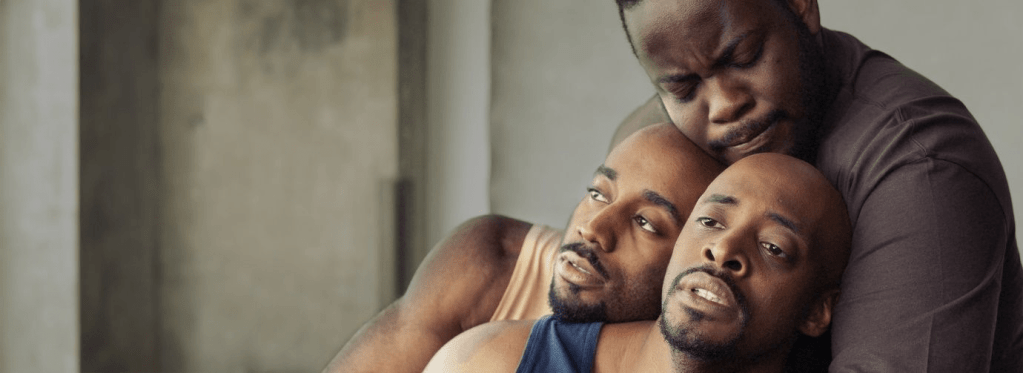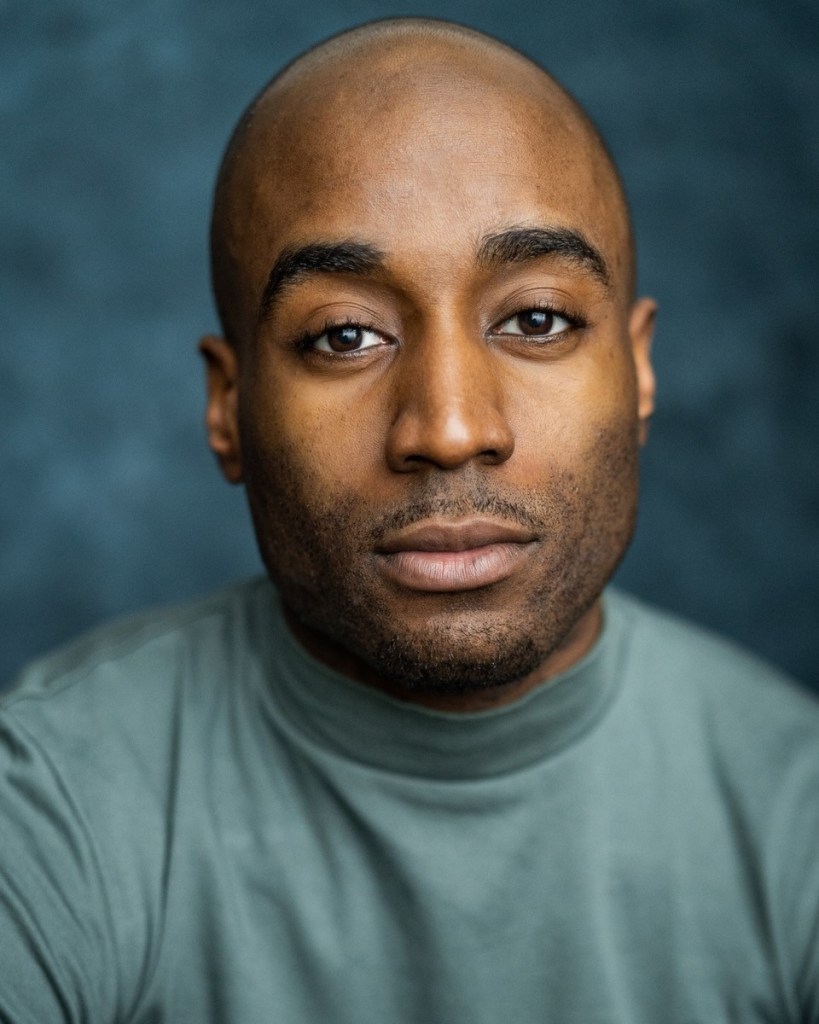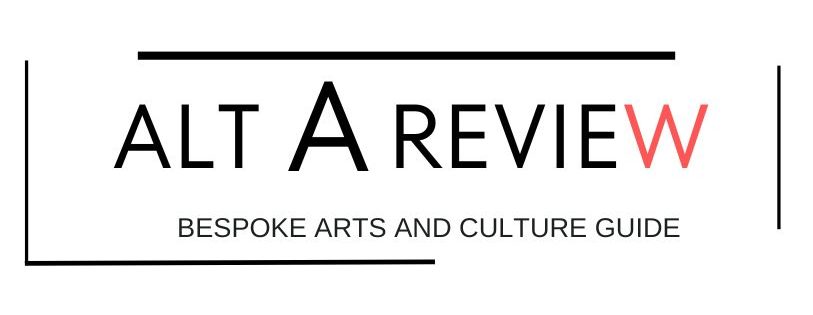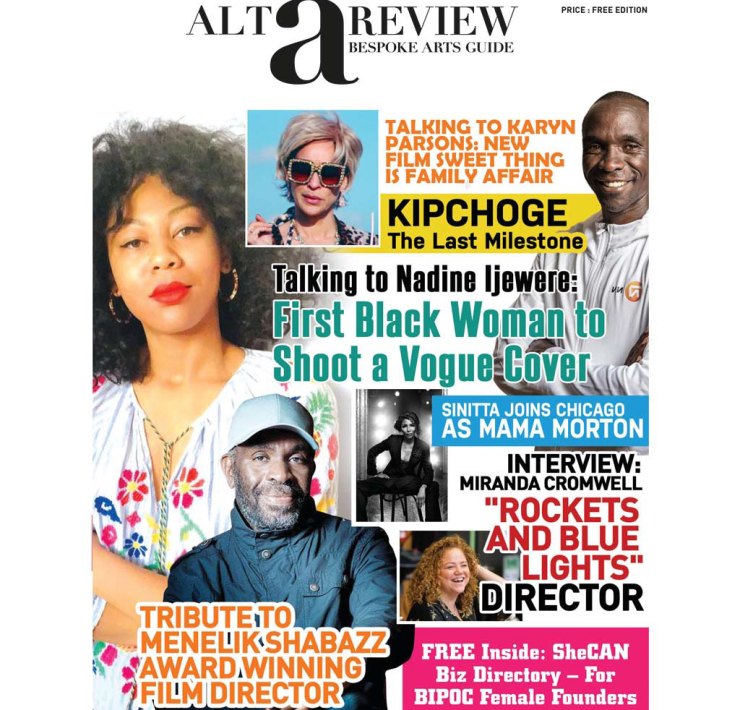Powerful Fusion of Movement
“I think people should come and see the piece, “Now I See”, because a lot of what I’ve just said, it’s exploring things that are really specific to these men, to these black men reconnecting as brothers and reconnected to themselves”. LANRE MALAOLU

Lanre Malaolu is an award-winning writer, director and choreographer, working across stage and screen. Lanre merges dialogue and movement to tell ground-breaking, socially engaged stories about our world. ALT spoke to Lanre about his new production “Now I See”.
Two brothers reunite to honour their sibling’s life at a celebration of remembrance. As they begin to explore letting go, they are forced to confront their shared past and long-standing estrangement.
Following the sell-out run of #SAMSKARA (The Yard), this brand-new work by Lanre Malaolu explores the challenge of forgiving yourself for a lifetime of suppressed emotion, while celebrating the profound bond of brotherhood and the resilience that can be found in joy.
A powerful fusion of movement, song, and text, Now, I See is an exploration of identity, forgiveness and nature’s visceral power to heal.
Now, I See is the second instalment in Lanre’s trilogy that excavates and celebrates the truth of being a Black man in contemporary Britain.
LOOKING FOR A JOB!! FOR 1000’s of NEW JOBS EVERY WEEK CLICK HERE.
A unique element of Lanre’s work stems from Rudolf Laban’s movement psychology, enabling him to build dynamic and bold storytelling charged with truth He has now commissioned by STRATFORD EAST to present latest stage production the production “Now, I See” – opens (10th May – 1st June 2024).

CAST
Kieron – Oliver Alvin-Wilson
Dayo – Nnabiko Ejimofor
Adeyeye – Tendai Humphrey Sitima
Prelude:
Lanre M: Hi I’m good. This is the first time we’ve met, and we’ve spoken over the years.
ALT A REVIEW
I Know it’s bizarre because I was putting that in my head as well. I was thinking, you know what, you’ve kind of been in connection with me since I’ve been doing this.
Lanre M
From Figure, the first short film that I had done, the short black and white film, it’s actually quite brilliant and beautiful that of all the pieces, this is the one where we connect with and it’s the latest one and it’s taken me on such a journey, but that’s wild.

Interview
ALT A REVIEW
Yes, so let’s talk about starting out because obviously you talked about Figure, so when I think about you, I think about dance. So, talk about how you got into the dance and how dance led to you doing this?
Lanre M:
That’s a beautiful, robust question. A simple question, but robust. So, I’ll answer it in a simple, robust way. I started off as an actor. I went to a place called Anna Scher Theatre, I grew up with and was in a class with some beautiful, brilliant artists and actually the seed of dance, and I use the word dance, but actually the word that I’m using a lot more these days is movement, which I can get onto later on.
But the seed of dance came in around after the classes. We’d always put some music on and just dance at the end of the class. And it was just like a kind of thing that we did. That is all it was, it was just a thing that we did. And that thing that we did grew and grew and grew into a thing that we had to do that we wanted to do to express ourselves alongside the acting classes.

And then I made this group, with a friend and that group grew into a Company. That Company ended up touring the world and doing some incredible things. I toured a piece in the States with the incredible Breakin Convention, Jonzi D, I toured a piece that I choreographed directed, and we went to four states in America, including Harlem. And we performed at the Harlem Apollo, which was pretty life-changing and amazing.
During this time I went to drama school, and I was still dancing. our classes were quite rigorous training there. I went to a drama school called drama Centre, which is now closed, and it was 12-hour days, but I found myself before classes started just going into a room and just moving, just moving, putting music on and dancing. It became this really important thing in my life that.
I was working as an actor, and I didn’t really realize how important dance was until I turned down a couple of big acting jobs to do some projects with my company. I was like, this feels too important for me and for the people that I’m doing it with. And it fed me deeply.
And I took some time out in a way that I look at it now. I did take some time out because what I did is I was saying a lot of no’s to a lot of acting jobs just to say yes to the Company I had run at the time, which is no longer running, and also myself as a choreographer. So, I got into this thing called the Old Vic 12. It was the first year, the first cohort. And so, people were seeing me as a choreographer, and they also always saw me as an actor.

I was at the RSC and did all these big theatre jobs and I was always seen as an actor, but also within those spaces, the movement directors would always come to me and ask me for stuff, not ask me for stuff, but ask me for ideas because they’d known about my dance Company. So, things, the world were starting to merge, but I also knew that I needed to take some time out and understand the world properly.
I needed to understand movement choreography and not jump between the two, which I think you can do well. But for me, I wanted to go full into the choreography. I did that for some time. And then I think where worlds collided, and I think the worlds have always collided because I’ve used a lot of the acting things that I’ve learned as an actor over the past, however many years into my craft today.
But I think where the worlds collided was with my first production, my first theatre production called Elephant in the Room, which had an amazing sold out run at the People’s Theatre and opened many beautiful, brilliant doors and connected with me with a lot of people. And that fused movement and acting, I wrote it as well. So, I was fusing all these worlds together. It was the first thing that I had written that got put on stage. It was a solo show, which I was in, and there was movement dance in it and acting. I think that for me was the jump off point.

ALT A REVIEW
Who was the 9-year-old Lanre that made you the creative you are today?
Lanre M:
I never thought to myself, this industry is for me, or nothing actually made me want to do it, which is an interesting thing to say. What it was just, which is crazy as I think about it, it’s kind of rooted from where all my work, all the stuff that I collaborate with is it’s all about this inner feeling, right? I had an inner feeling as this 9-year-old child of just wanting to express myself, it started off for me, it was like, oh, I just want to express.
And then as I got older and developed and understood, it was all about connecting actually. Expression for me looks like, it feels like it’s outward going, but expression is allowing you to connect either to other people, but most importantly to yourself. Because as I’m doing the acts, so for example, when I went to parties, they put on Michael Jackson, I just did these body popping thing.
I didn’t know what I was doing, but it felt good, and it felt like I was talking to myself in a way that I haven’t talked to myself through movement. And that was expression. And that expression was also in acting. There was something about getting into a character that allowed me to kind of connect to myself and understand myself and understand people and the world that we’re in in a deeper way. For me it was all about expression, but as I uncovered that, I think it was just about connection. And actually, I thought all my work is really about connecting and reconnecting, especially this piece.
ALT A REVIEW:
Let’s just talk about Now I See , and a bit about what you’re talking about connecting and self-expression without addressing in the elephant in the room. But as a black male, being in a space where you are the orator of your story, how does that feel being able to be the person who tells your story as opposed to having the story told about you?
Lanre M:
Sometimes as humans, when you’re not heard, you scream louder, and you keep screaming until you are heard. I could sit here and wax. I think there’s loads that could be said around this. I think a big part of it is just some could call it screaming, some could call it putting your foot down. Some could call it standing ground and staying there.
But for me it’s like just well, hello, hello, hello, hello, hello, hello, hello. You’re going to hear me. You’re going to hear me. Can you hear me? Because that’s all it is. And you’re seeing this kind of inflection point with all these brilliant artists, some of which you mentioned bringing their work to audiences and them being received well. These pieces have always been in us and with us it is not necessarily, well, some could say, oh, now that there’s a platform or people inviting, I just think we’re screaming louder.



L_R Nnabiko Ejimofor, Oliver Alvin-Wilson (Tendai Humphrey Sitima by Sam Donnelly )
I just think over the years it’s like, well, hold on, hold on, hold on. And that hold on, just gets stronger and stronger so that you can’t deny the voice. You can’t deny the feeling.
The feeling because there’s certain pieces that you can go and watch that are made by people who look like myself and you, where there’s a feeling behind it that is very unique because it’s interesting when you’ve said something to someone or when you’ve blocked a hold on or when you’ve blocked an I’m here for so long over amount of time, something comes through on stage and in film, that has this undeniable vibrational energy that transcends the stage.
And it’s also just great work regardless of the, it’s just great work and it’s always lived in me, in us, in we creatively in all that we’ve been doing it just there we were and are storytellers from back in the day. That’s it. I don’t know if that answers your question, but that’s my answer.
ALT A REVIEW:
Wearing your director’s hat what can we expect from Now I See?
Lanre M:
I want to be careful of how much I say, but essentially the main protagonists are brothers and one of the brothers has passed away. He is still within this space with the other two brothers that’s very bit cryptic.
Lanre M:
What can we expect in terms of, is there dance? Is there music? What kind of directive style are you bring into the piece?
It’s one that’s really hard to quantify for me, it’s about, what I can say is that there are moments of movement, moments of dialogue, moments of music that all interlink with each other. But it all comes from the emotional storytelling that these characters are going on. And so there’s, in families, there are memories that we have. And so we explore some of these memories through those types of narrative storytelling.
So through the movement, and that’s through music and through words, spoken word, word of mouth, text, basically. But it’s all about these characters and how they’re trying to reconnect to themselves into each other. And there’s various sequences that happen where images of seeing things are transformed through the men’s bodies into, so whether that be animals or it’s like everything is transformed through and from the body. And so the body is going to be used in a way that I don’t think has been really explored on stage.
The physicality of these men, these black men, and seeing these black men move in this way together, I think is something that is really important to explore. Because actually it does go deeper in terms of how black men show sensitivity and touch and exploring that physically on stage is important for me. And this, I think.
ALT A REVIEW :
Thank you. And being the writer director, is that an easier proposition because you know your vision or does it complicate things? Is that more challenging?
Lanre M:
I wouldn’t say it’s challenging. For me, actually, it just comes through me like that. So it’s like, for me, it’s the writing, but as I’m writing it, I’m going, okay. Because when I write, I physically feel it, and so I see the images and I’m laughing at my desk and I’m crying and I’m, do you know what I mean? I’m doing all this stuff.
So that actually, that has given me all the fuel and the kind of things that I need to then go into the rehearsal with, because I’m feeling it, seeing it during the writing stage, of course, once the beautiful, brilliant artists involved, and I have to mention my incredible team. Man! the actors and the team involved.
Once we’re all there together, it’s no longer just Lanre directing and writing this piece. It’s a collaboration. Of course, there are times where I need to do what I’m going to do. I’m coming prepared and I know what’s going on in the room. But also it is a collaboration and I really, really cherish every single person and take it to heart, who I invite into the creative space because it’s a really sensitive, beautiful, joyful space, which then reflects what hopefully will go on stage.
ALT A REVIEW: Why should people come and see the play?
Okay. I think people should come and see the piece, because it’s exploring things that are really specific to these men, to these black men reconnecting as brothers and reconnected to themselves. But that also is about family, and it’s about family ties and about what happens when those family ties are broken, and what does it look like to reconnect those family ties.
And I think every single family, whoever you are, whether the father, the mother, the son, the daughter, the uncle, the auntie can in some ways connect to this piece because it talks about something that is part of us. And what is a part of us is not only wanting to reconnect with family and friends, that we’ve kind of slightly become estranged over the years, but also how do we reconnect to ourselves when sometimes we feel ourselves going astray.
Whether that is something that you’ve wanted for your whole life, but that’s changed because of something that’s happened. But it’s all about reconnecting, forgiveness and healing. And so, yeah. And also you’re going to see some stuff on stage, which I can’t yet divulge.
ALT A REVIEW :
Where do you call home?
Lanre M:
I call home the rehearsal room. I call home being in a room with incredible artists and hearts and minds and souls and connecting deeply and creating and playing and laughing and crying all towards the same aligned vision of wanting to create something that is rooted from that feeling of being seen in a space as you are for everything that you are and not having to hide. So for me, that’s home.
CAST
Kieron – Oliver Alvin-Wilson
Dayo – Nnabiko Ejimofor
Adeyeye – Tendai Humphrey Sitima
Director Lanre Malaolu
Pay What You Can performance (what’s this?): Mon 13 May, 7.30pm
You might also like: Discover visual artist Outi Pieski’s exploration of identity, culture and environment












